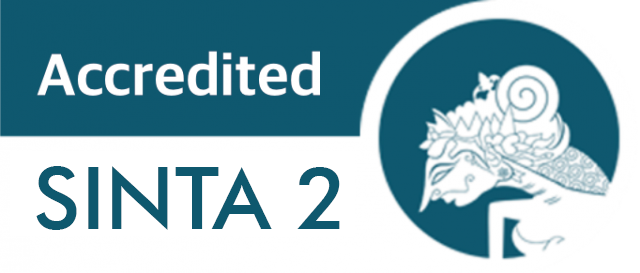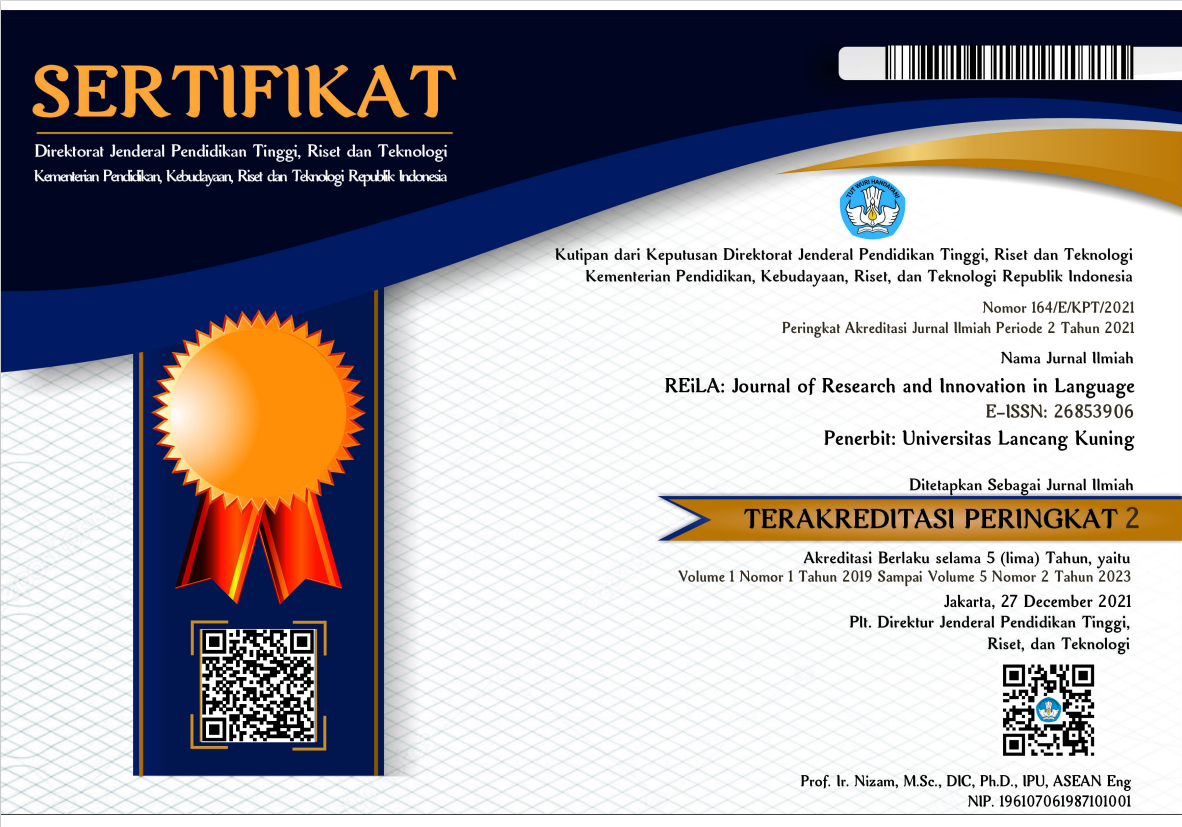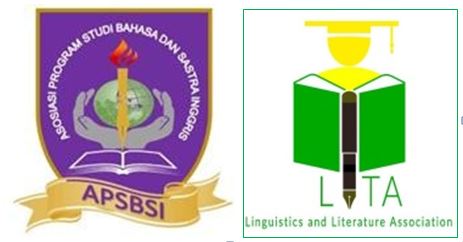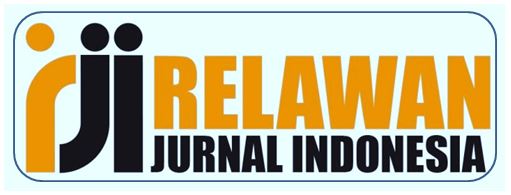EcoLinguistic Insights in Nias Village Name: Unravelling the Dynamic Bond Between Language and Environment
Abstract
Ecological structures hold profound significance in the identification and naming of localities within Nias villages. This significance underscores the dynamic bond between language and the environment, forming a foundational aspect of the local ethnicity. This study endeavors to delve into the ecological significance that underpins the naming of Nias villages, elucidating the intricate connection between language and the environment upon which village names are founded. In pursuit of this objective, the research engages with a purposive sample of 20 informants, representing 151 localities within Nias. Through in-depth interviews, valuable insights are gathered and transcribed to constitute the research data. Employing a descriptive qualitative design, the study leverages a semantic representation protocol to categorize data according to the ecological units embedded in the village names. The investigation's findings reveal that the Nias villages predominantly employ the Nias language lexicon. Notably, 55 villages incorporate the lexicon "hili" denoting 'hill or mountain,' such as "Hilimbana" ('hill-kapuk tree') and "Hiliweto Gela" ('hill-bees'). Additionally, the names incorporate ecological elements such as vegetation, rivers, animals, equipment, events, supernatural objects, and numbers. These names reflect the deep integration of ecological elements into the local community's cultural identity and highlight the rich ecological diversity of the region. The study emphasizes the importance of understanding the cultural and ecological connections in village names for the preservation of Nias Regency's heritage and the promotion of ecological awareness. Further research avenues include exploring the socio-cultural significance of village names and investigating the impact of language on environmental conservation efforts. Understanding the intricate relationship between language, culture, and the environment is crucial for sustainable development and the preservation of cultural and ecological heritage in Nias Regency.
Downloads
References
Ahdar, N., Halik, N. M. Y., & Musyarif, N. (2021). Implication of education in acculturating culture of mambabei an a'uhaidao village, aralle district, mama’sa regency, west sulawesi. JTP - Jurnal Teknologi Pendidikan, 23(3), 169-183. https://doi.org/10.21009/jtp.v23i3.22668
Alderman, D. H., & Reuben, R. R. (2020). The classroom as “toponymic workspace”: towards a critical pedagogy of campus place renaming. Journal of Geography in Higher Education, 44(1), 124–141. https://doi.org/10.1080/03098265.2019.1695108
Ambarita, J. (2019). Toponimi kedanauan di pulau Samosir [Doctoral dissertation, Universitas Negeri Medan]. DigiRepo Unimed. http://digilib.unimed.ac.id/36789/
Basik, S., & Rahautsou, D. (2019). Toponymic politics and the symbolic landscapes of Minsk, Belarus. Geographia Cassoviensis, 13(2), 107-120.
Baruadi, M. K., Eraku, S. S., Napu, N., & Hendra. (2023). The Toponymy of Village Names in Gorontalo, Indonesia. Theory and Practice in Language Studies, 13(4), 1016–1022. https://doi.org/10.17507/tpls.1304.23
Bennett, A. F., Haslem, A., Cheal, D. C., Clarke, M. F., Jones, R. N., Koehn, J. D., Lake, P. S., Lumsden, L. F., Lunt, I. D., MacKey, B. G., Mac Nally, R., Menkhorst, P. W., New, T. R., Newell, G. R., O’Hara, T., Quinn, G. P., Radford, J. Q., Robinson, D., Watson, J. E. M., & Yen, A. L. (2009). Ecological processes: A key element in strategies for nature conservation. Ecological Management and Restoration, 10(3), 192–199. https://doi.org/10.1111/j.1442-8903.2009.00489.x
Berrouet, L. M., Machado, J., & Villegas-Palacio, C. (2018). Vulnerability of socio—ecological systems: A conceptual Framework. Ecological Indicators, 84(1), 632–647. https://doi.org/10.1016/j.ecolind.2017.07.051
Bodini, A., & Klotz, S. (2017). The Science of Ecology for A Sustainable World. ECOLOGY: The Science of Ecology for a Sustainable World, I. 11, 15-733.
Boonzaaier, C. and Wels, H. (2017). Authenticity lost? the significance of cultural villages in the conservation of heritage in south africa. Journal of Heritage Tourism, 13(2), 181-193.
Boribayeva, G. A., Madiyeva, G. B., Medetbekova, P. T., Mambetov, K. S., & Ingamova, J. G. (2018). Peculiarities of toponymic reflexes of Kazakhstan. XLinguae, 11(1), 342-353.
Chiblow, S. and Meighan, P. J. (2021). Language is land, land is language: the importance of indigenous languages. Human Geography, 15(2), 206-210. https://doi.org/10.1177/19427786211022899
Darheni, N. (2021). The naming system for villages and borough in cirebon regency: a study of toponyms in indonesia. International Journal of Research and Innovation in Social Science, 5(12), 790-801. https://doi.org/10.47772/ijriss.2021.51241
Gea, W. (2022). Community participation in the selection of nias regent candidates in Biouti Village, Idanogawo District, Nias Regency in 2020. Journal of Law, Politic and Humanities, 2(2), 95-104.
George, J. M. (1999). World view analysis of knowledge in a rural village: implications for science education. Science Education, 83(1), 77-95.
Gevers, J. (2018). Translingualism revisited: Language difference and hybridity in L2 writing. Journal of Second Language Writing, 40, 73-83. https://doi.org/10.1016/j.jslw.2018.04.003
Ives, C. D. and Kelly, A. (2015). The coexistence of amenity and biodiversity in urban landscapes. Landscape Research, 41(5), 495-509. https://doi.org/10.1080/01426397.2015.1081161
Isa, W. A. R. W. M., Zin, N. A. M., Rosdi, F., & Sarim, H. M. (2018). Digital preservation of intangible cultural heritage. Indonesian Journal of Electrical Engineering and Computer Science, 12(3), 1373. https://doi.org/10.11591/ijeecs.v12.i3.pp1373-1379
Khurana, D., Koli, A., Khatter, K., & Singh, S. (2023). Natural language processing: state of the art, current trends and challenges. Multimedia Tools and Applications, 82(3), 3713–3744. https://doi.org/10.1007/s11042-022-13428-4
Kim, D. (2020). Learning Language, Learning Culture: Teaching Language to the Whole Student. ECNU Review of Education, 3(3), 519–541. https://doi.org/10.1177/2096531120936693
Kong, L., Xu, X., Wu, J., & Zhang, M. (2021). Comprehensive evaluation and quantitative research on the living protection of traditional villages from the perspective of “production–living–ecology”. Land, 10(6), 570. https://doi.org/10.3390/land10060570
Kusters, A. (2014). Language ideologies in the shared signing community of Adamorobe. Language in Society, 43(2), 139-158.
Latif, S., Qayyum, A., Usman, M., & Qadir, J. (2019). Cross lingual speech emotion recognition: Urdu vs. Western Languages. Proceedings - 2018 International Conference on Frontiers of Information Technology, FIT 2018, 88–93. https://doi.org/10.1109/FIT.2018.00023
Mandillah, L. (2022). A morphosyntactic and semantic analysis of toponyms among the Luhya: A case of Bungoma County. Journal of Languages, Linguistics and Literary Studies, 2(1), 28–37. https://doi.org/10.57040/jllls.v2i1.189
Metz, M. (2018). Pedagogical content knowledge for teaching critical language awareness: the importance of valuing student knowledge. Urban Education, 56(9), 1456-1484. https://doi.org/10.1177/0042085918756714
Municipality, B.-S. of S. (2018). Kota sibolga dalam angka: Sibolga Minicipality in Figures. BPS-Statistics of Sibolga Municipality.
Nurhayati, N. (2018). Toponymy and Branding of Modern Residential Sites in Semarang. E3S Web of Conferences, 73, 1–4. https://doi.org/10.1051/e3sconf/20187308021
Njoh, A. J. (2016). Tradition, culture and development in Africa: Historical lessons for modern development planning. Routledge.
Perfors, A. and Navarro, D. J. (2014). Language evolution can be shaped by the structure of the world. Cognitive Science, 38(4), 775-793. https://doi.org/10.1111/cogs.12102
Putro, D. B. W. (2016). Perilaku verbal dan nonverbal dalam ranah kesehatan pada masyarakat di dusun tambran kidul kecamatan semin kabupaten gunungkidul (kajian etnolinguistik). Prasasti: Journal of Linguistics, 1(1). https://doi.org/10.20961/prasasti.v1i1.548
Uzelac, M., Yuan, K., & Ingleson, M. J. (2020). A comparison of two zinc hydride catalysts for terminal alkyne c–h borylation/hydroboration and the formation of 1,1,1-triborylalkanes by tandem catalysis using zn–h and b–h compounds. Organometallics, 39(8), 1332-1338. https://doi.org/10.1021/acs.organomet.0c00086
Reyes-García, V., Paneque-Gálvez, J., Luz, A. C., Guèze, M., Macía, M. J., Orta-Martínez, M., … & Pino, J. (2014). Cultural change and traditional ecological knowledge: an empirical analysis from the tsimane' in the bolivian amazon. Human Organization, 73(2), 162-173. https://doi.org/10.17730/humo.73.2.31nl363qgr30n017
Rothier, P. S., Brandt, R. M. C., & Kohlsdorf, T. (2017). Ecological associations of autopodial osteology in neotropical geckos. Journal of Morphology, 278(3), 290-299. https://doi.org/10.1002/jmor.20635
Suryani, N. N. M. (2022). The ideology of cultural preservation in the legong sambeh bintang dance in bangle village, karangasem. International Journal of Social Science and Human Research, 05(03). https://doi.org/10.47191/ijsshr/v5-i3-15
Smith, K. and Kirby, S. (2008). Cultural evolution: implications for understanding the human language faculty and its evolution. Philosophical Transactions of the Royal Society Biological Sciences, 363(1509), 3591-3603. https://doi.org/10.1098/rstb.2008.0145
Schluter, D. and Conte, G. L. (2009). Genetics and ecological speciation. Proceedings of the National Academy of Sciences, 106(supplement_1), 9955-9962. https://doi.org/10.1073/pnas.0901264106
Siahaan, F. (2021). Identification of application of biological architecture in the South Nias’s traditional House in Indonesia. IOP Conference Series: Earth and Environmental Science, 878(1). https://doi.org/10.1088/1755-1315/878/1/012012
Silva, A. R. d. and Dias, L. (2018). An interface element for numerical analysis of flat plate/shell elements with deformable connection. Latin American Journal of Solids and Structures, 15(2). 1-16. https://doi.org/10.1590/1679-78254640
Sitepu, E. S., Manurung, J. S., & Rismawati, R. (2021). Implementation of sustainable tourism development of tourism villages in langkat regency. International Journal of Applied Sciences in Tourism and Events, 5(2), 176-189. https://doi.org/10.31940/ijaste.v5i2.176-189
Tan, P. (2021). Naming as Styling: Inauthenticity in Building Names in Singapore. Yap 2016. https://www.academia.edu/download/67277402/Offprint.pdf
Taskinsoy, J. (2020). From Primitive Barter to Inflationary Dollar: A Warless Economic Weapon of Mass Destruction. SSRN Electronic Journal, 1–50. https://doi.org/10.2139/ssrn.3542145
Thompson, K., Lantz, T. C., & Ban, N. C. (2020). A review of indigenous knowledge and participation in environmental monitoring. Ecology and Society, 25(2). 1-27 https://doi.org/10.5751/es-11503-250210
Tonta, Y. (2009). Preservation of scientific and cultural heritage in balkan countries. Program, 43(4), 419-429. https://doi.org/10.1108/00330330910998066
Wardana, D., Swaryo, U., Srikartini, D., & Yaniyuningsih, N. (2022). Forms of change and institutions that affect changes in village regulation policies to become traditional villages in siak regency, riau province. International Journal of Health Sciences, 1853-1865. https://doi.org/10.53730/ijhs.v6ns9.12777
Yang, S., Feng, D., Qiao, L., Kan, Z., & Li, D. (2020). Exploring Pre-trained Language Models for Event Extraction and Generation. ACL 2019 - 57th Annual Meeting of the Association for Computational Linguistics, Proceedings of the Conference, 5284–5294.
Ren, W., Zhang, X., & Shi, Y. (2021). Evaluation of ecological environment effect of villages land use and cover change: a case study of some villages in yudian town, guangshui city, hubei province. Land, 10(3), 251. https://doi.org/10.3390/land10030251
Rose-Redwood, R., Alderman, D. H., & Azaryahu, M. (2009). Geographies of toponymic inscription: new directions in critical place-name studies. Progress in Human Geography, 34(4), 453-470. https://doi.org/10.1177/0309132509351042
Vachha, B. and Adams, R. D. (2009). Implications of family environment and language development: comparing typically developing children to those with spina bifida. Child: Care, Health and Development, 35(5), 709-716. https://doi.org/10.1111/j.1365-2214.2009.00966.x
Vilbrandt, C., Pasko, G., Pasko, A., Fayolle, P., Vilbrandt, T., Goodwin, J. S., … & Kunii, T. L. (2004). Cultural heritage preservation using constructive shape modeling. Computer Graphics Forum, 23(1), 25-41. https://doi.org/10.1111/j.1467-8659.2004.00003.x
Zhao, Q., Yu, M., Liu, L., Li, B., & Feng, L. (2021). Spiritual inspiration of village cadres and inclusive innovation of bricolage in rural autonomy in china. Frontiers in Psychology, 12. https://doi.org/10.3389/fpsyg.2021.617838










